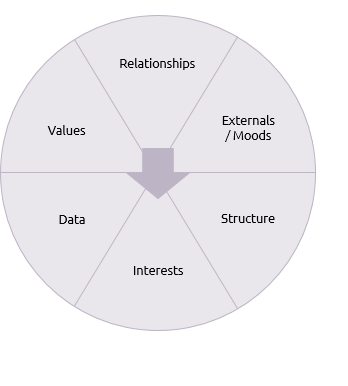Gary Furlong provides a comprehensive model for conflict resolution in his book ‘The Conflict Resolution Toolbox’ 1 at the heart of which is the circle of conflict.
The circle has six elements, which Furlong identifies as the main drivers for conflict. In the top half of the circle are:
 Values: the parties’ belief systems and ideas about what is right or wrong.
Values: the parties’ belief systems and ideas about what is right or wrong.
Relationships: past negative experiences, stereotypes and poor communications.
Externals/Moods: factors unrelated to dispute, ‘bad hair days’ and the like.
Furlong maintains that straying into the drivers in the top half of the circle will probably intensify the conflict.
In order to resolve conflict the conversation should be focused on areas over which the parties have some control, i.e. the causes of conflict in the bottom half of the circle:
Data: lack of information or misinformation, data collection problems.
Interests: each parties’ wants, needs, desires, fears or concerns.
Structure: limitations on resources, geographical constraints, organisational and authority issues.
These drivers for conflict can be usefully combined with Thamhain and Wilemon’s sources of conflict in the project life cycle and the Thomas-Kilmann model to give the P3 manager a perspective on the challenges they face to manage conflict with a project or programme.
- Furlong, G (2005), The Conflict Resolution Toolbox, Wiley and Sons, Ontario.





